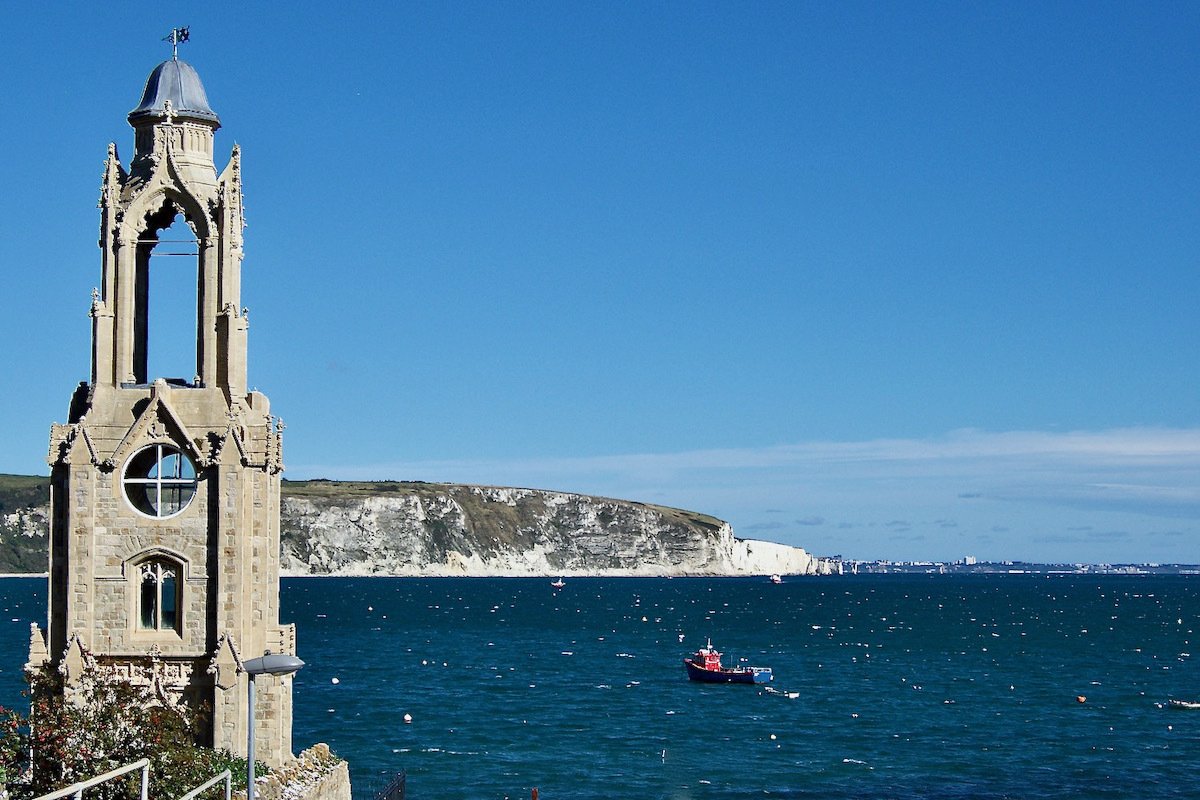
To many, Swanage is a traditional, old-fashioned English seaside town, a place to wander along the sea front enjoying the murmur of the waves. Some may notice the old tram tracks embedded in the concrete and ponder their significance as they pause on the Stone Quay.
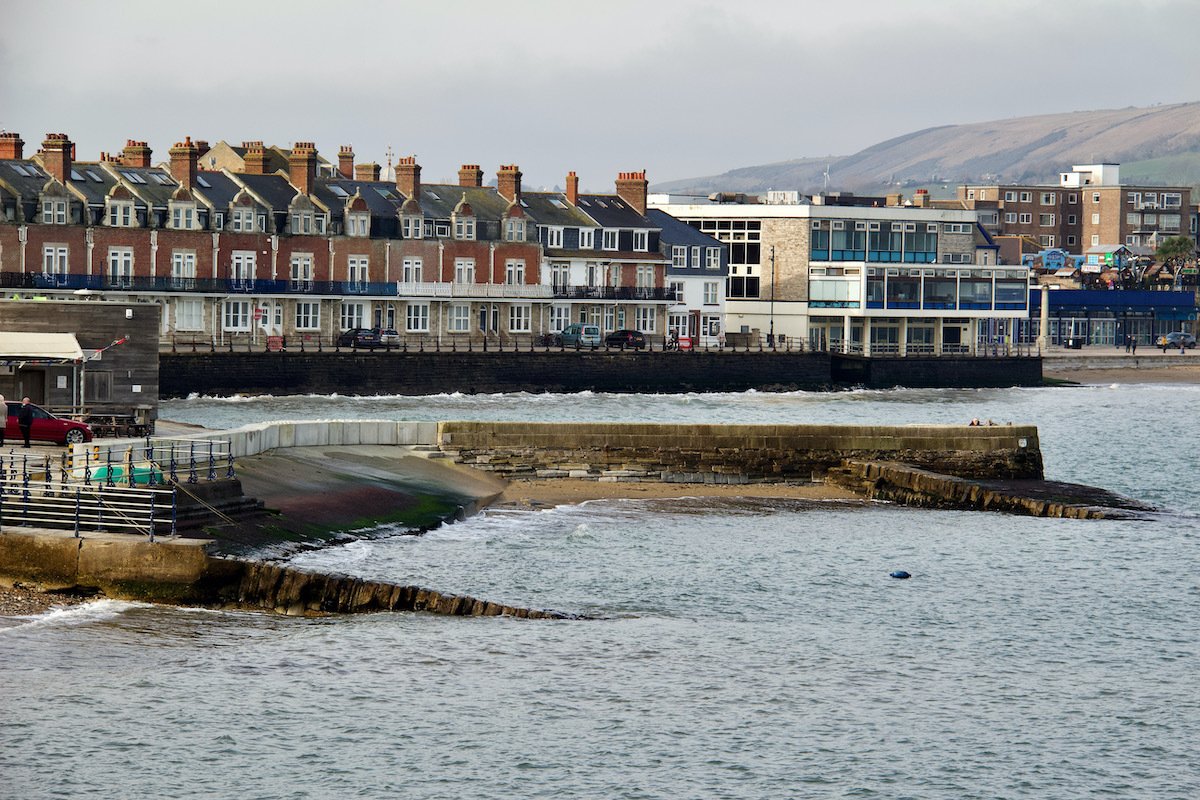
Purbeck Stone Brings Prosperity to Swanage
During the 1830s the re-paving of many London streets created a growing demand for Purbeck Stone, the ideal material. John Mowlem, a local man with a successful building company in London, was quick to take advantage of this. Quarries around Swanage were already a popular source of Purbeck Stone, but it was Mowlem who began exporting the stone from Swanage, rather than Poole Harbour. The Georgian Stone Quay (built from Purbeck Stone) was once the heart of the town’s industrial heritage. Horse-drawn carts would arrive at the quay. The stone was then loaded onto small boats that rowed the cargo out to larger boats waiting to start a journey to London. Traditionally, the horse drawn carts had driven into the sea to load their cargo onto the boats. This tradition continued, despite the addition of tracks for horse-drawn trams and a pier. The ruins of this pier, now known as the old pier, can still be seen in the sea beyond the Victorian pier that replaced it.
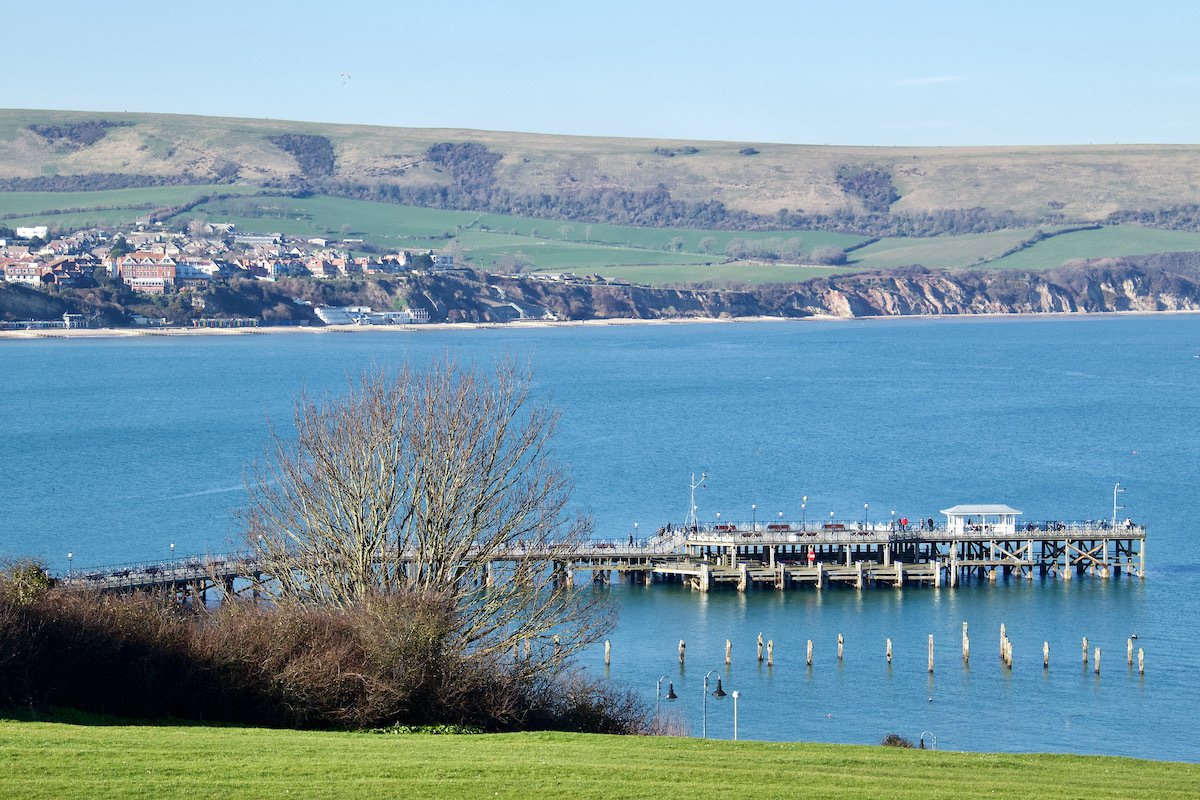
When Mowlem retired, he came back to Swanage and his nephew, George Burt, became manager of the (still) very successful building firm Mowlem & Company. Both John Mowlem and George Burt were great benefactors to their home town and have left an enduring mark. But it was Burt who was responsible for some of the quaint and curious monuments around the town. Boats on the return journey from London would be laden with ballast. Any heavy cargo would have done – but Burt was an avid re-cycler. He scavenged interesting architectural features and monuments through his company’s involvement in several prestigious projects in London. Towering above the town, Purbeck House, which was Burt’s private residence, incorporates some of his treasures.
Purbeck House Hotel
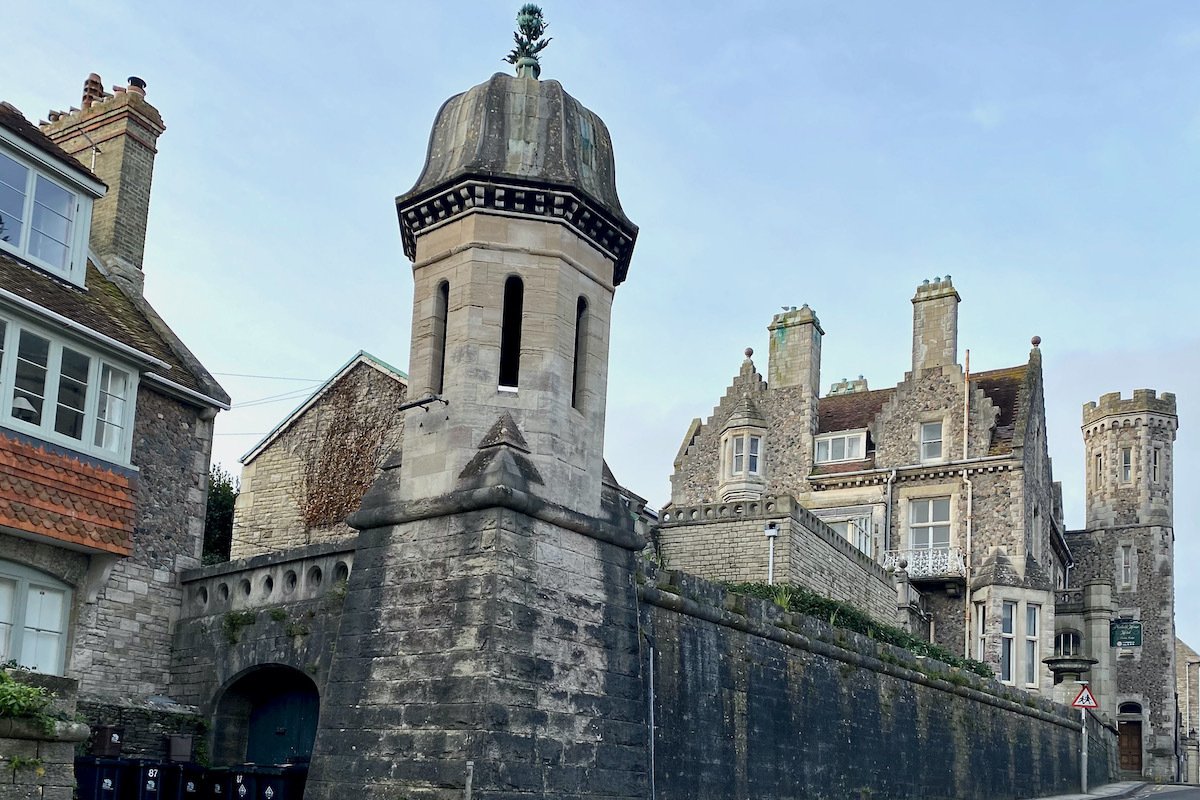
Once dubbed the King of Swanage by Thomas Hardy, Burt did create his own castle in the town. Purbeck House was built in the Scottish Baronial style and imitates a feudal castle. It was a family home until 1935. From then until 1994 it was used as a convent by the Sisters of Mercy. Since that time, it has been restored to its former glory and is now a hotel. This unique building encompasses some very unusual artefacts that began life in London. These include statues from the Royal Exchange, a tiled floor that originally graced the Houses of Parliament, a balustrade and columns from Billingsgate Market, a gargoyle reputedly from Westminster Hall and an arch that once stood in Hyde Park. The latter is particularly interesting, as Burt worked on this arch during his early days at Mowlem’s. The arch stood in Hyde Park for 40 years. It was removed when Hyde Park Corner was remodelled but, as Burt was involved in the remodelling, he was able to salvage it and put it in his own garden. A short distance down the High Street from Purbeck House, is the Swanage Town Hall – its startling façade was a gift from Burt to the town.
The Town Hall
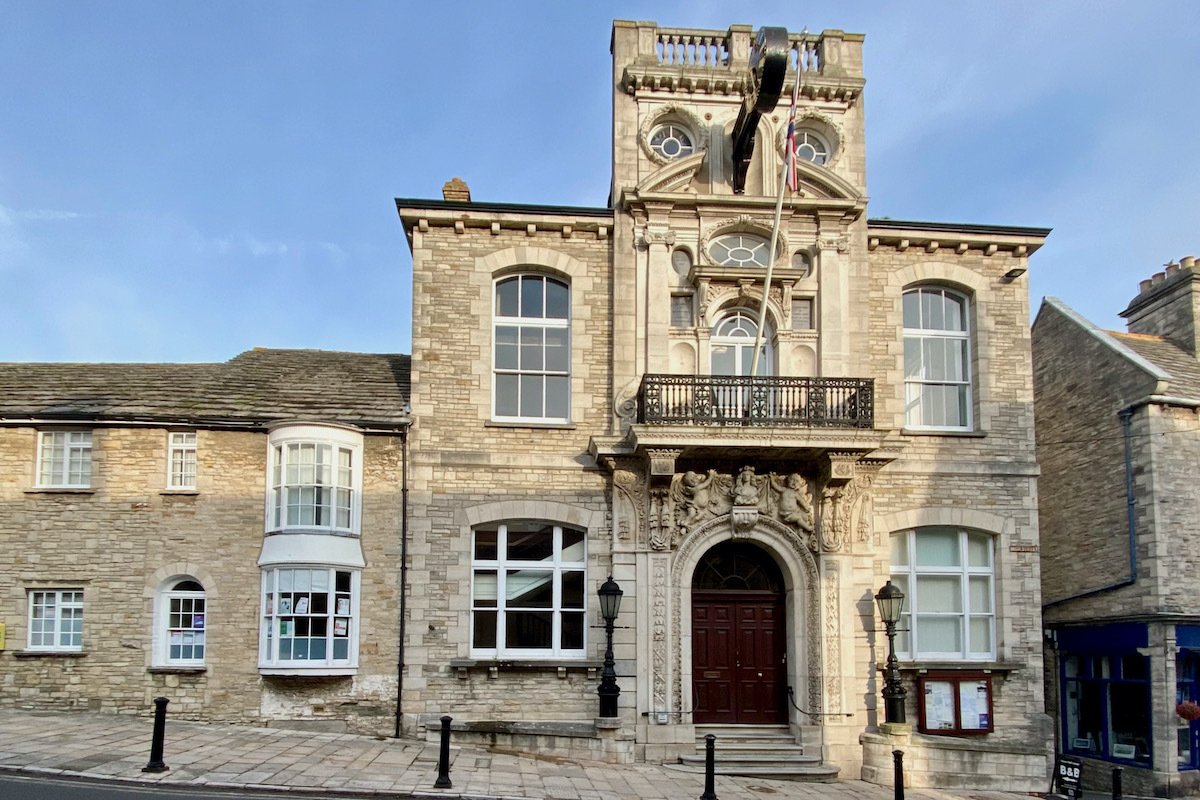
This building was part of Burt’s plan to endow some civic pride on Swanage, hitherto a quarrying, fishing and agricultural village. The façade was rescued from the 17th century Mercers’ Hall in London, home of one of the richest guilds in the city. The centre of this finely carved façade was designed by Edward Jerman, a pupil of Sir Christopher Wren. It features the emblem of the Mercers’ Company – the Virgin Mary with a cherub on each side. The town hall clock is much older than the building and is believed to have come from the St Mary Somerset church in London, which was demolished in 1872.
The Columns in Prince Albert Gardens
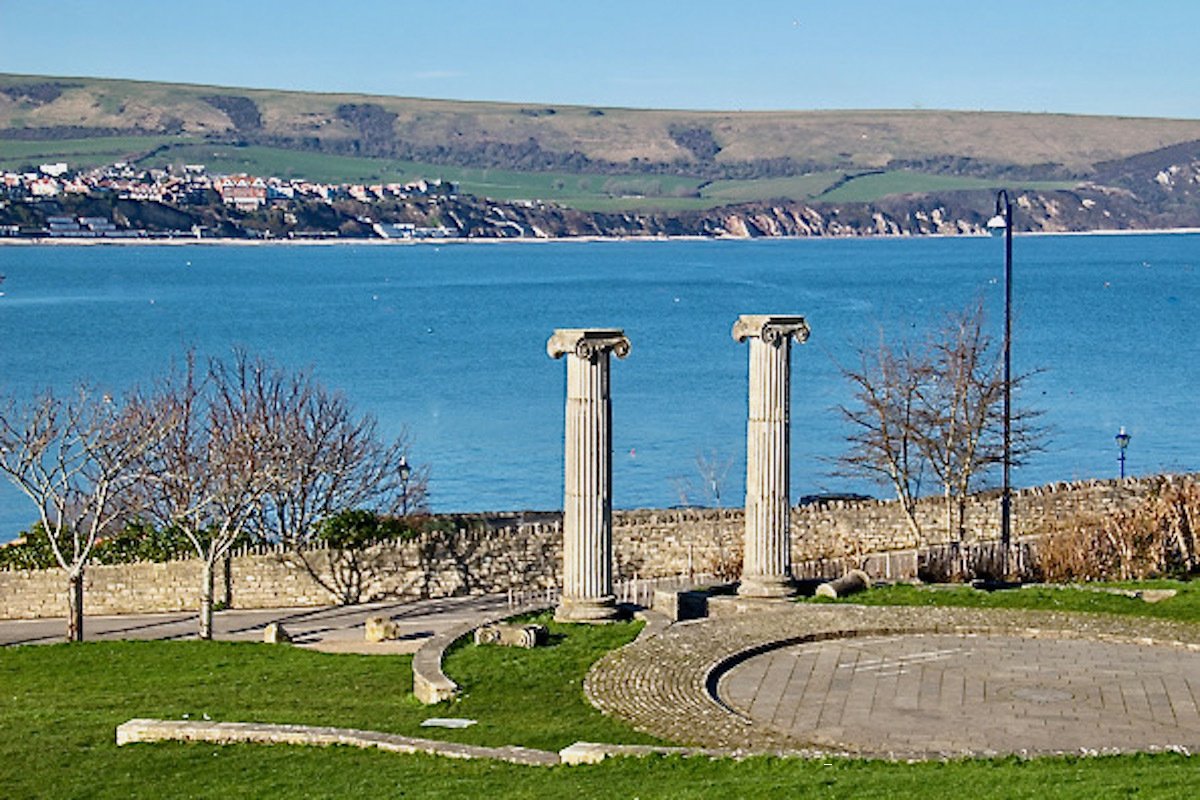
On Swanage sea front visitors will find two splendid columns reminiscent of Roman times. A pair of Portland Stone ionic columns guard the entrance to Prince Albert Gardens at the foot of the Peveril Downs. Dating from the 19th century, these columns originally adorned a building in London and replicate columns of the 2,400-year-old Athena Parthenon. When they first came to Swanage they stood in the forecourt of The Grove, a majestic mansion on the seafront, which was to become the Grosvenor Hotel. That hotel was demolished in 1988 and the columns were moved to the gardens that were created in 1996 as part of the Swanage Seafront Improvement Scheme. The original owner of the Grove was also the recipient of an unusual house-warming present from George Burt: a clock tower.
The Wellington Clock Tower
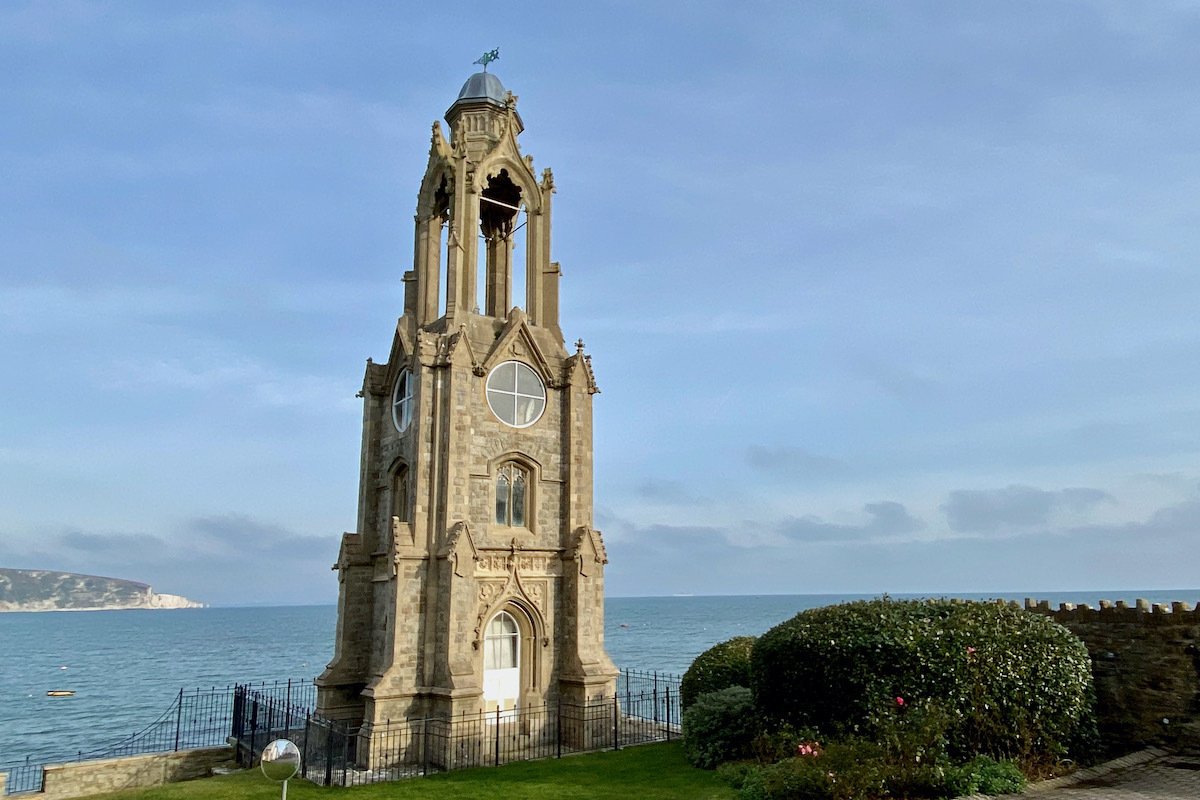
Anyone following the shoreline beyond the Victorian pier will be surprised, on rounding a corner, to find themselves standing beneath a splendid clock tower perched on the cliffs above. This is the Wellington Clock Tower. It was made for the Great Exhibition of 1851, in honour of the Duke of Wellington, and placed on the southern approach to London Bridge. In 1866 it was deemed to be an obstruction by the Commissionaire of the Metropolitan Police and was dismantled. The Duke of Wellington had fallen out of favour and the clock had already been returned to its owner. Burt acquired the carefully numbered bricks as ballast for the Stone Boat returning to Swanage. When the tower was re-assembled it was not presented to the town but to Burt’s friend and fellow-contractor, Thomas Docwra, then the proud owner of The Grove. Docwra had it re-erected in its present position at the eastern end of his garden, which was later developed as a residential area. The tower’s elegant spire disappeared in 1904, which is something of a mystery, but in truth it was probably the result of storm damage. It is now topped by a cupola, but is still probably the most admired of Burt’s eccentric gifts to the people of Swanage.
Since the days of Mowlem and Burt, Swanage has shaken off the dust of its industrial history. But that is another story and one soon to be told…





